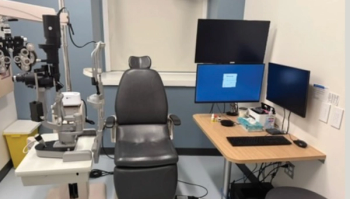
Pearls to manage cataract surgery on hypotonous eyes
Better visual outcomes goal for patients who also have had glaucoma procedure
Better management of hypotonous glaucoma patients having cataract surgery can help ensure great visual outcomes.
Reviewed by Anup Khatana, MD
Careful planning, pre-, intra-, and postoperative modifications can lead to better visual outcomes in hypotonous glaucoma patients when cataract surgery is performed, said
Factors that can affect the cataract surgery outcome include a 0.1 to 1.0 mm reduction in axial length after trabeculectomy, an IOP rise after phacoemulsification in eyes with functional blebs, and possible changes in keratometry.
“There is not a lot of data on the effects of cataract surgery on eyes with tubes, but there does not appear to be a significant effect on the IOP,” Dr. Khatana said.
Diagnosing hypotony
When diagnosing
“If axial length reduction, choroidal folds or hypotony maculopathy are present for greater than six to nine months, they will likely be permanent,” Dr. Khatana said.
Surgeons have several choices to manage cataract surgery and hypotony, one of which is performing phaco alone. This could be an option if the bleb has some vascularity and looks like it could scar enough to raise the IOP. It is also an option if the hypotony is mild.
A second option, if clinically significant signs of hypotony are present, is to perform a staged procedure to raise the IOP first and perform cataract surgery later. This could involve transconjunctival scleral flap or compression sutures or an open trab revision.
If choosing this option in a patient with hypotony and cylinder of 3 to 4 D or greater, consider adding a scleral relaxing incision posterior to the scleral flap. A third option is a combined phaco and glaucoma revision procedure.
RELATED:
Tube revision
If a patient with a tube has significant hypotony, you should consider some form of tube revision before phaco, Dr. Khatana said.
Dr. Khatana also shared a few pearls for preop and intraop planning:
- Consider using a pupil expansion device if the pupil dilates poorly.
- Consider endothelial cell counts in eyes with multiple previous surgeries.
- Look at the internal sclerostomy with gonioscopy to see if there are peripheral anterior synechiae, etc., in the area.
- Preop patient counseling is especially crucial in patients with hypotonous eyes because of the potentially greater unpredictability in outcomes.
There could be IOL power errors, and these patients are not good multifocal IOL candidates. Other problems to discuss include the risk of an acute IOP spike in the first 24 hours, a late IOP rise from bleb fibrosis that could require reinstituting medications, and fixation involving visual field loss that could leave patients frustrated even after a 20/20 result.
IOL
Dr. Khatana strongly recommends noncontact Ascan axial length measurements over contact or immersion methods because of the error created by contact on a soft eye. If the axial length is similar between eyes at the time of phaco even if only one eye is hypotonous, then your calculation will be easier, and any rise in IOP will most likely not have a significant impact on refractive outcome, he said.
You can use your usual IOL formulas in hypotonous eyes. Dr. Khatana uses Hill-RBF and the
“With standard combined phaco-trab surgery, we usually aim for slight myopia, since the axial length may decrease with the IOP drop,” Dr. Khatana said. “With hypotony, we usually need to aim for some hyperopia, expecting the IOP and axial length to increase.”
There also are key treatment options for physicians to consider after the surgery. Postoperatively, consider using the same or a lighter and shorter steroid regimen if you want to induce bleb fibrosis to raise the IOP, Dr. Khatana advised.
If you want to maintain the current IOP and bleb function, use a combination of intraocular or depot steroid, a longer and more frequent steroid regimen, and possible use of adjunct subconjunctival off-label injections of 5-fluorouracil or mitomycin C.
Both patients and surgeons should have some patience with surgical results. In some instances, the process takes some time.
“I tell patients that fibrosis takes time to develop, so the improvements attributable to a higher IOP will take time,” he concluded.
RELATED:
Disclosures:
Anup Khatana, MD
E:
This article was adapted from Dr. Khatana’s presentation at the American Glaucoma Society annual meeting. Dr. Khatana has no related disclosures.
Newsletter
Get the essential updates shaping the future of pharma manufacturing and compliance—subscribe today to Pharmaceutical Technology and never miss a breakthrough.







































